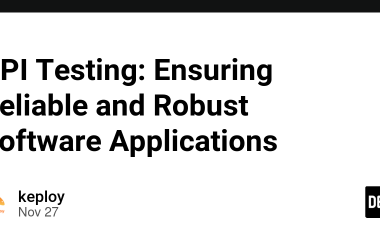In modern web development, setting up a robust and efficient database connection is crucial for building scalable and maintainable applications. NestJS, a popular backend framework for Node.js, offers a comprehensive ecosystem for creating APIs and microservices. When combined with Prisma, an advanced database toolkit, and Docker, a platform for containerizing applications, you can achieve an optimized development environment for your database-driven applications. In this guide, we’ll walk through the process of establishing a PostgreSQL connection using Prisma in a NestJS setup, all within a Docker environment. To showcase the implementation, we’ll also create a Bookmark API as an example.
Table of Contents
- Introduction
- Prerequisites
- Setting Up NestJS Project
- Configuring Docker for PostgreSQL
- Installing and Configuring Prisma
- Creating PostgreSQL Connection with Prisma
- Building the Bookmark API with Prisma
- Running the Application
1. Introduction
NestJS is a powerful and extensible framework that enables developers to build efficient, scalable, and modular server-side applications. Prisma, on the other hand, simplifies database access with a type-safe and query-building API. By integrating these technologies within a Docker environment, you can ensure consistent development and deployment across different platforms.
2. Prerequisites
Before we begin, make sure you have the following prerequisites installed on your system:
- Node.js and npm: For running the NestJS application.
- Docker: For containerizing the PostgreSQL database.
- Nest CLI: For generating NestJS project files.
- Visual Studio Code (or any preferred code editor): For writing and editing code.
3. Setting Up NestJS Project
Let’s start by creating a new NestJS project. Open your terminal and execute the following commands:
# Install the Nest CLI globally (if already installed ignore this command)
npm install -g @nestjs/cli
# Create a new NestJS project
nest new nest-prisma-bookmark-api
Navigate to the project directory:
cd nest-prisma-bookmark-api
4. Configuring Docker for PostgreSQL
To ensure a consistent database environment, we’ll use Docker to set up a PostgreSQL container. Create a docker-compose.yml file in the root of your project directory with the following content:
version: '3.8'
services:
postgres:
image: postgres:latest
environment:
POSTGRES_USER: nestjs
POSTGRES_PASSWORD: nestjs_password
POSTGRES_DB: bookmark_db
ports:
- '5432:5432'
networks:
- postgres_network
networks:
- postgres_network
This configuration sets up a PostgreSQL container with a user, password, and database name.
5. Installing and Configuring Prisma
Prisma simplifies database interactions by generating a type-safe client from your data model. To install Prisma, run:
npm install @prisma/cli
Initialize Prisma by running:
npx prisma init
Follow the prompts and choose the PostgreSQL database you set up with Docker. This will generate a prisma folder containing your database configuration.
6. Creating PostgreSQL Connection with Prisma
Open the prisma/schema.prisma file and define your data model. For our Bookmark API example, let’s create a Bookmark model:
model Bookmark {
id Int @id @default(autoincrement())
title String
url String
createdAt DateTime @default(now())
}
After defining the schema, apply the changes to the database by running:
npx prisma migrate dev
This will generate the necessary database tables.
7. Building the Bookmark API with Prisma
Create a new module for the Bookmark API:
nest generate module bookmark
Inside the generated bookmark module, create a bookmark.entity.ts file with the following content:
import { Prisma } from '.prisma/client';
export class Bookmark implements Prisma.BookmarkCreateInput {
id?: number;
title: string;
url: string;
createdAt?: Date;
}
Now, create a bookmark.service.ts file within the same module:
import { Injectable } from '@nestjs/common';
import { PrismaService } from 'src/prisma/prisma.service';
import { Bookmark } from './bookmark.entity';
@Injectable()
export class BookmarkService {
constructor(private readonly prisma: PrismaService) {}
async create(data: Bookmark): Promise<Bookmark> {
return this.prisma.bookmark.create({
data,
});
}
async findAll(): Promise<Bookmark[]> {
return this.prisma.bookmark.findMany();
}
}
Finally, create a bookmark.controller.ts file within the module:
import { Controller, Get, Post, Body } from '@nestjs/common';
import { BookmarkService } from './bookmark.service';
import { Bookmark } from './bookmark.entity';
@Controller('bookmark')
export class BookmarkController {
constructor(private readonly bookmarkService: BookmarkService) {}
@Post()
async create(@Body() bookmarkData: Bookmark): Promise<Bookmark> {
return this.bookmarkService.create(bookmarkData);
}
@Get()
async findAll(): Promise<Bookmark[]> {
return this.bookmarkService.findAll();
}
}
8. Running the Application
With the Bookmark API implemented, it’s time to run the application. Start the PostgreSQL container using Docker Compose:
docker compose up -d
Then, start the NestJS application:
npm run start:dev
Your NestJS application with Prisma integration and the Bookmark API is now up and running. You can access the API at http://localhost:3000/bookmark.
Conclusion
In this article, we’ve explored the process of establishing a PostgreSQL connection using Prisma within a NestJS application. By combining these technologies with Docker, you can achieve a consistent and efficient development environment. The Bookmark API example demonstrates the seamless integration of Prisma and NestJS, enabling you to build powerful and scalable database-driven applications.
Here’s a link to a sample project repository for a more concrete demonstration of the concepts discussed in this article: Github Repo






